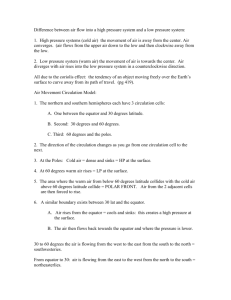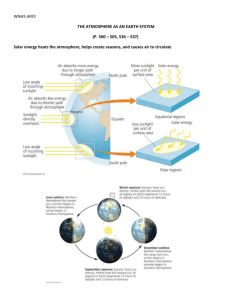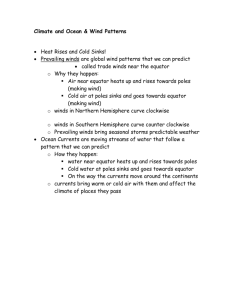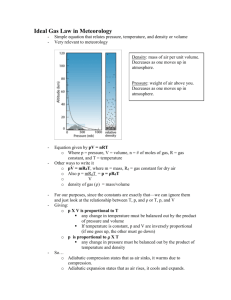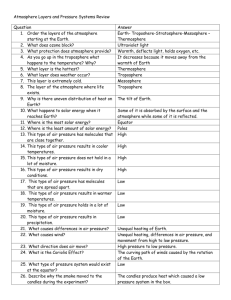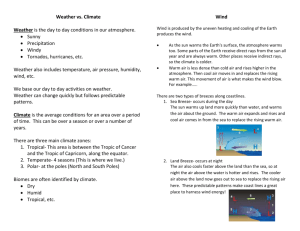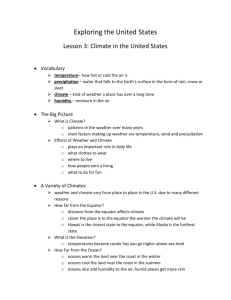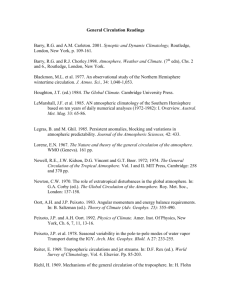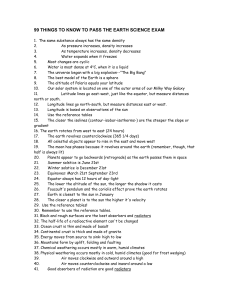File
advertisement
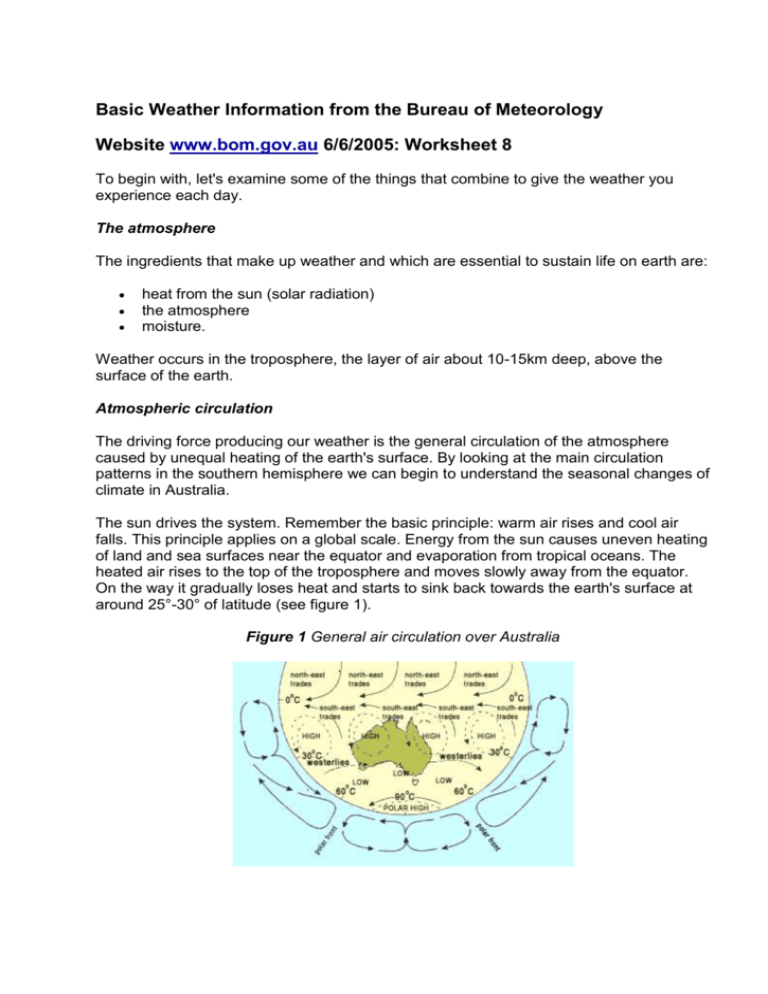
Basic Weather Information from the Bureau of Meteorology Website www.bom.gov.au 6/6/2005: Worksheet 8 To begin with, let's examine some of the things that combine to give the weather you experience each day. The atmosphere The ingredients that make up weather and which are essential to sustain life on earth are: heat from the sun (solar radiation) the atmosphere moisture. Weather occurs in the troposphere, the layer of air about 10-15km deep, above the surface of the earth. Atmospheric circulation The driving force producing our weather is the general circulation of the atmosphere caused by unequal heating of the earth's surface. By looking at the main circulation patterns in the southern hemisphere we can begin to understand the seasonal changes of climate in Australia. The sun drives the system. Remember the basic principle: warm air rises and cool air falls. This principle applies on a global scale. Energy from the sun causes uneven heating of land and sea surfaces near the equator and evaporation from tropical oceans. The heated air rises to the top of the troposphere and moves slowly away from the equator. On the way it gradually loses heat and starts to sink back towards the earth's surface at around 25°-30° of latitude (see figure 1). Figure 1 General air circulation over Australia Wind and pressure systems of the world The differences in air temperature and pressures over the world cause wind. The air at the equator is much warmer than air at the poles. Warm air expands and rises, creating an area of low pressure; cold air is dense and sinks, creating an area of high pressure. But because the earth is spinning on its axis, the wind patterns become more complex. Between the areas of high and low pressure winds form the patterns shown in figure 1. Figure 1 shows how this circulation affects Australia. The high and low pressure systems each have a major influence at different times of the year. Points to remember The sun warms the earth's surface and this warms the air above. The earth's surface is warmed most near the equator, and least at the poles. The air above land is warmed more than that above water. Warm air expands and rises, creating an area of low pressure; cold air is dense and sinks to create an area of high pressure. Winds occur because the atmospheric pressures try to 'even themselves out'. The rotation of the earth causes the high and low pressure wind spirals. In the southern hemisphere, air from high pressure systems spirals anticlockwise, but spirals clockwise into low pressure systems.
